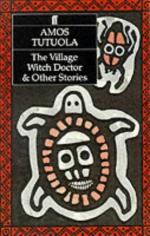|
This section contains 373 words (approx. 1 page at 400 words per page) |

|
The Village Witch Doctor Summary & Study Guide Description
The Village Witch Doctor Summary & Study Guide includes comprehensive information and analysis to help you understand the book. This study guide contains the following sections:
This detailed literature summary also contains Bibliography on The Village Witch Doctor by Amos Tutuola.
Amos Tutuola's story "The Village Witch Doctor" was originally published as part of the 1967 novel Ajaiyi and His Inherited Poverty and then as the title story in his 1990 collection, The Village Witch Doctor and Other Stories. Tutuola is known as the first African writer to gain international recognition. This story is one of many loosely based on Yoruba folktales of the oral tradition, which Tutuola heard as a child. Tutuola's non-standard form of written English, his first language being Yoruba, was controversial for its grammatical incorrectness and apparent lack of sophistication, what Dylan Thomas referred to in a controversial designation as "new English."
"The Village Witch Doctor" is about Aro, a man from a wealthy family, and his friend Osanyin, a witch doctor. After Aro asks Osanyin to help him bury his inherited fortune, the witch doctor goes back to dig up the fortune and buries it in his own shrine. As a result of this theft, which Aro never finds out was perpetrated by his friend the witch doctor, Aro dies in poverty. This "inherited poverty" is passed on to his son, Jaye, and, eventually, to his grandson, Ajaiyi. With each generation, the family becomes increasingly impoverished. In a state of abject poverty, Ajaiyi goes to the witch doctor for advice on how to escape his poverty. Osanyin advises him to place nine rams in nine sacks on his father's grave, as a trade for the return of his fortune by his dead father. The witch doctor then steals the first six rams from the grave and butchers them for food. Ajaiyi, however, tricks the witch doctor by hiding in one of the last three sacks and jumping out with a machete to demand the return of his family fortune.
This story includes themes of inheritance, wealth, and poverty, as captured by repeated reference to the family's "inherited poverty" and the witch doctor's deceitful insistence that if Ajaiyi follows his advice, he will become "money man!" The theme of deceit and cleverness are also prominent in the story, as the witch doctor first cleverly deceives three generations of men out of their family fortune, and then Ajaiyi cleverly deceives the witch doctor into returning the fortune to its rightful owners.
Read more from the Study Guide
|
This section contains 373 words (approx. 1 page at 400 words per page) |

|



